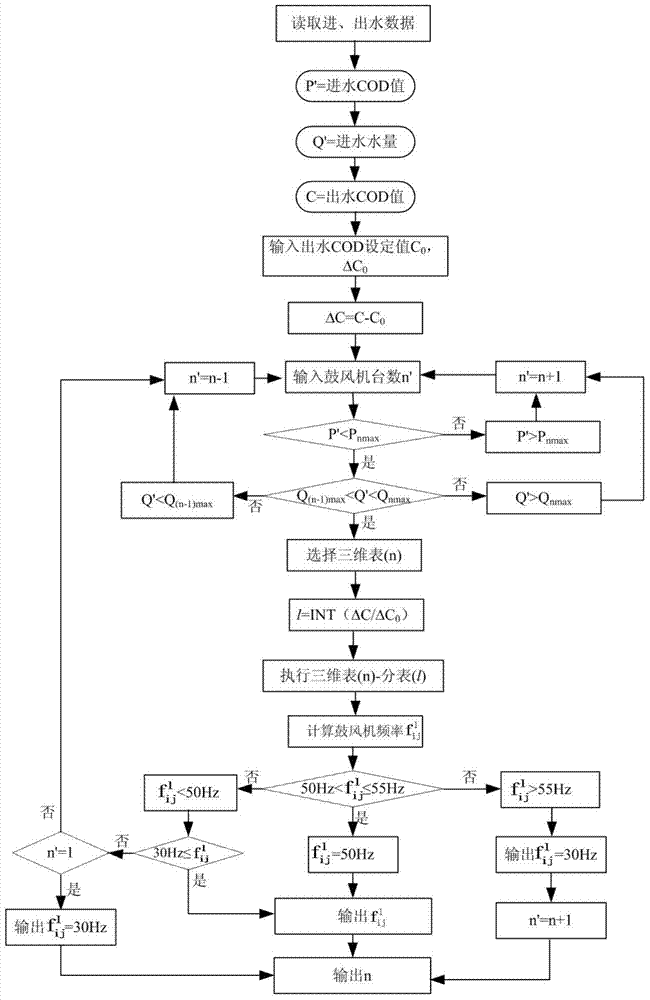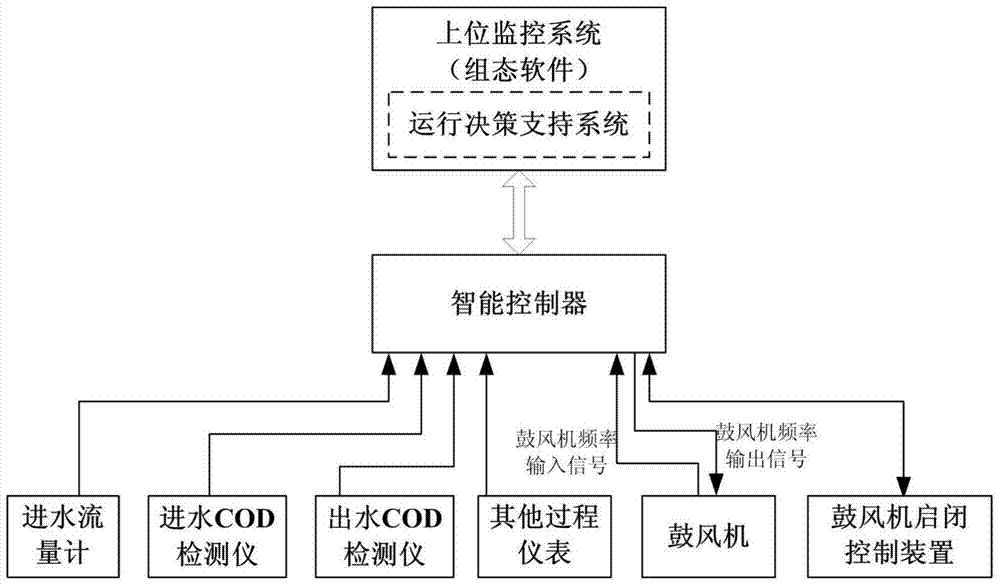Sewage treatment energy-saving control method based on three-variable three-dimensional table
A technology for energy-saving control and sewage treatment, which is applied in the direction of program control, comprehensive factory control, and comprehensive factory control, and can solve problems such as difficult practical application of theoretical methods
- Summary
- Abstract
- Description
- Claims
- Application Information
AI Technical Summary
Problems solved by technology
Method used
Image
Examples
example 1
[0072] Take the maximum frequency of the blower as 50Hz, and the actual number of working blowers as 2 in a sewage treatment plant of 50,000 tons.
[0073] The specific process of adjusting the frequency or the number of blowers is as follows:
[0074] 1. Establish a three-dimensional table 2-sub-table 2 in the host computer with the gradually increasing influent flow Q, influent chemical oxygen demand P, and effluent chemical oxygen demand deviation ΔC as three variables (as shown in Table 2 Shown), where ΔC=2ΔC 0 , 1=2, wherein, as the influent flow rate Q, the chemical oxygen demand of the influent water body P, and the deviation ΔC of the effluent water body chemical oxygen demand gradually increase or decrease, the theoretical number n of corresponding blowers gradually increases or decreases; As the influent flow Q, influent chemical oxygen demand P, and effluent chemical oxygen demand deviation ΔC gradually increase or decrease, the corresponding blower theoretical out...
example 2
[0091] Take the maximum frequency of the blower as 50Hz and the actual number of blowers as n as an example.
[0092] The specific process of adjusting the frequency or the number of blowers is as follows:
[0093] 1. Establish a three-dimensional table n (as shown in Table 7) in the host computer with the gradually increasing influent flow Q, influent chemical oxygen demand P and effluent chemical oxygen demand deviation ΔC as three variables, where , with the influent flow Q, influent chemical oxygen demand P, and effluent chemical oxygen demand deviation ΔC gradually increasing or decreasing, the corresponding number of theoretical working units n of the blower gradually increases or decreases, and the corresponding number of theoretical working units of the blower n gradually increases or decreases; as the influent flow Q, influent chemical oxygen demand P and effluent chemical oxygen demand deviation ΔC gradually increase or decrease, the corresponding blower theoretical ...
PUM
 Login to View More
Login to View More Abstract
Description
Claims
Application Information
 Login to View More
Login to View More - R&D
- Intellectual Property
- Life Sciences
- Materials
- Tech Scout
- Unparalleled Data Quality
- Higher Quality Content
- 60% Fewer Hallucinations
Browse by: Latest US Patents, China's latest patents, Technical Efficacy Thesaurus, Application Domain, Technology Topic, Popular Technical Reports.
© 2025 PatSnap. All rights reserved.Legal|Privacy policy|Modern Slavery Act Transparency Statement|Sitemap|About US| Contact US: help@patsnap.com



